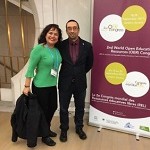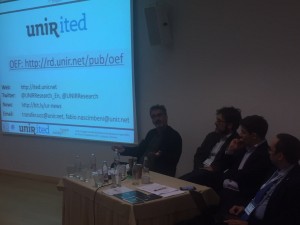Revolving learning. Both sides of the table

The body has many muscles. Over 600 to be specific, although when you are leading into your 50’ the 8 abs look more like one big muscle than a chocolate bar, to be honest. But there are others: memory is a muscle, love is a muscle, empathy is a muscle, music is a muscle and, definitively, learning is a muscle. All these require training, exercise and daily practice. Goals, achievements, reinforcement and enjoy. And, mostly, challenging theirselves and not to give anything for granted. Learning is a process, a personal approach to a topic, a subject, a concept or even to life. It requires discipline, sometimes collaboration, lots of inspiration and a little of serendipity. But nothing comes without work. As the great painter Picasso said: “Inspiration exists, but it must find you working”.

And being uneasy in a chair, in a position, in a role, is part of that challenge. Working at the 2nd OER World Congress these days give me the opportunity to be at both sides of the table without warning. You can be invited as a speaker to one session, moderator to other, participate as regular attendee to the next one; you can organize, edit, write, take pictures, discuss policy, listen to the educators, and so many hats in one head. It is the concept instant revolving doors applied to learning. You do not give anything for granted and change the role constantly, so that the learning ability gest improved, evolves and increases the performance. Nowadays, learning is not storing information: repositories do that for you. Learning is not either even to find information: any search engine does that for you. But learning is to connect dots, to question oneself, to challenge and be challenged and to make some progress, milestone a milestone. And working in a moving chair supports that idea.

This congress has brought over 600 people and 100 countries around a big table. And we have discussed, presented, attended and constructed together around the big table that is the congress motto: “From commitment to action”. Because there is a huge and widespreaded awareness of OER, but we require more action. And more accountability after that action. And these four dots in a row (awareness, commitment, action and accountability), connected, are the key to success in OER, to revolve learning, to revolve education.
Daniel Burgos
Ljubjana, Slovenia, September the 20th, 2017
